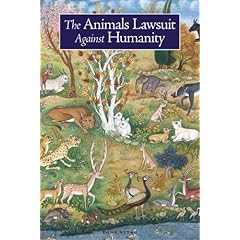Brethern of Purity: Ikhwān al-Safā

Paperback: 170 pages
Publisher: Fons Vitae,US (31 May 2005)
Language English
ISBN-10: 1887752706
ISBN-13: 978-1887752701
My friend is finishing a paper on What was the religious affiliation of the Brethren of Purity?
Here are some excerpts from her paper and from a conversation with her earlier:
In the 4th century of hijra, the time in which Ikhwān al-Safā (the Brethren of Purity) wrote their Rasāʾil, Baghdad was a multi-cultural society of mixed ethnicities, races and creeds and enjoyed a lot of freedom of thought and expressions.
1. Who are the Brethren of Purity?
The issue of the authorship of this significant document of the philosophical and religious thought of its time has stimulated the interest of scholars since its publication. It has been ascribed to various people - sometimes on grounds of strange misunderstandings.
To summarise the results: the authors of the ‘Rasāʾil Ikhwān al-S଼afā’ were contemporaries of Abū Sulaymān al-Mantiqī and Abū Ḥayyān al-Tawḥīdī, who were both acquainted with the Rasāʾil. We learn that from the quotes as well as from al-Mantiqī ‘s criticism of their doctrines. The fact that al-Mantiqī specially mentions al-Maqdisī from all the possible authors leads to the conclusion that he was personally acquainted with him. This means that their information is reliable and they give the actual names of the Sincere Brethren, the authors of the Rasāʾil Ikhwān al-Safā.
The Rasāʾil represent the first known Islamic encyclopaedia, and are an impressive compendium of the sciences of their time. There are a total of fifty-two epistles, even if sometimes in the text itself, it is mentioned that there are fifty-one of them. The last epistle (on magic) mentions the fifty previous ones and it therefore seems that one epistle was added later on at some point.
The entire encyclopedia is being translated now by the Ismaili Institute in London. Of course they claim the brethren were Ismailis:) All 4 volumes, 52 epistles. Each epistle ranges from 20 to 150 pages: some are long and some are shortish.
Her paper mainly deals with this:
Attempts to define the Ikhwān's ideological commitment have been made, but there has been no consensus on the matter. It is been argued and accepted by many scholars to be an Ismāʿīlī work although its attribution to Sunnī, Muʿtazalī, S଼ūfī or Shīʿa followers or to various combinations of these schools continue to be made and defended. Where did the Ikhwān fit within Islamic thought?
I liked these quotes from her conclusion:
*The ideal person is described in the Rasāʾil as:
excellent, intelligent and possessing insight, as if he is Persian in origin, Arab in faith, a h଼anīf in religion, an Iraqi in manners, a Hebrew in tradition, a Christian in conduct, a Syrian in devotion, a Greek in knowledge, an Indian in vision, a mystic (s଼ūfī) in his way of life, an angel in his morals, a divine being (rabbāni) in opinion, godly (ilahi) in Gnosticism (maʿārif) and of everlasting qualities.
And her conclusion:
It is mainly in the fields of textual borrowing, adaptations and reference that the Ikhwān revealed their fascination with eclecticism. They did not disregard borrowing from the entire spectrum of world scripture, pagan philosophy and Abrahamic theology. But that does not mean that they uncritically accepted the dogma of every religion whose texts they used. They did not hesitate to criticize where they found it necessary. Therefore it can be concluded that the Ikhwān adopted the madhab they believed to have been followed by Ibrāhīm, the ‘father’ of all monotheistic religions and all ahl al-kitāb.
This conclusion is contrary to all previous scholarship.



0 Comments:
Post a Comment
<< Home